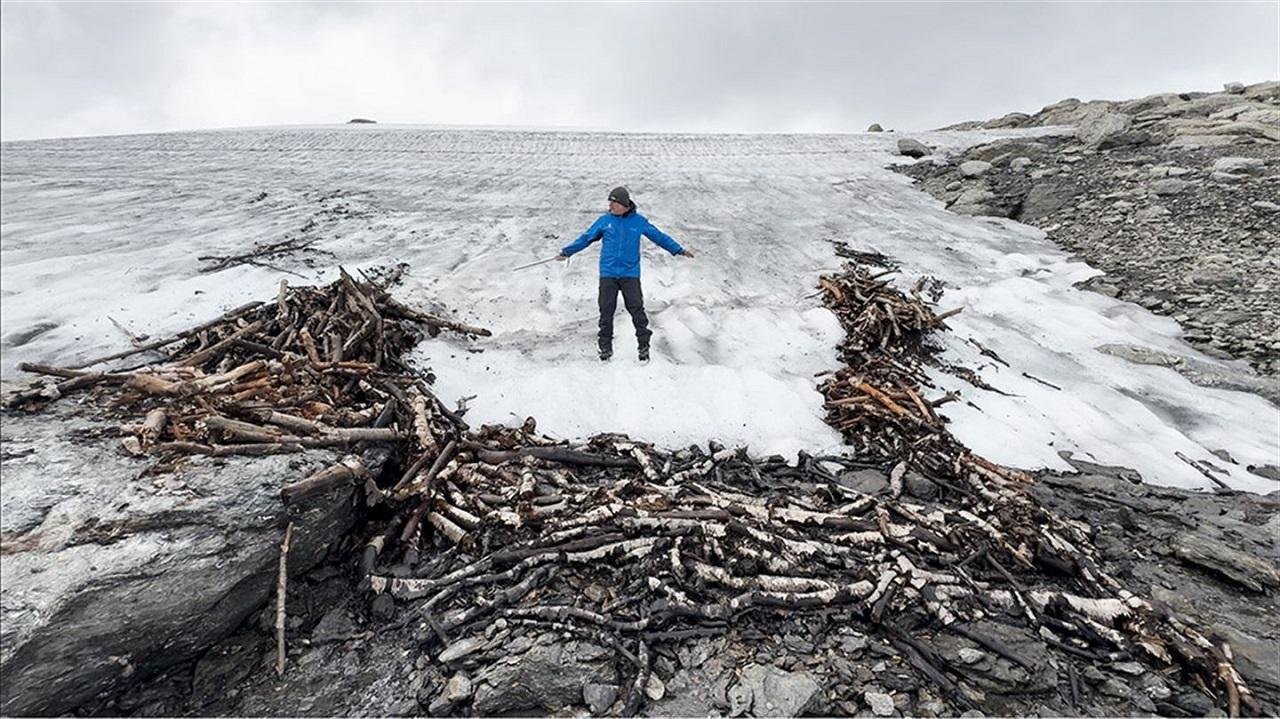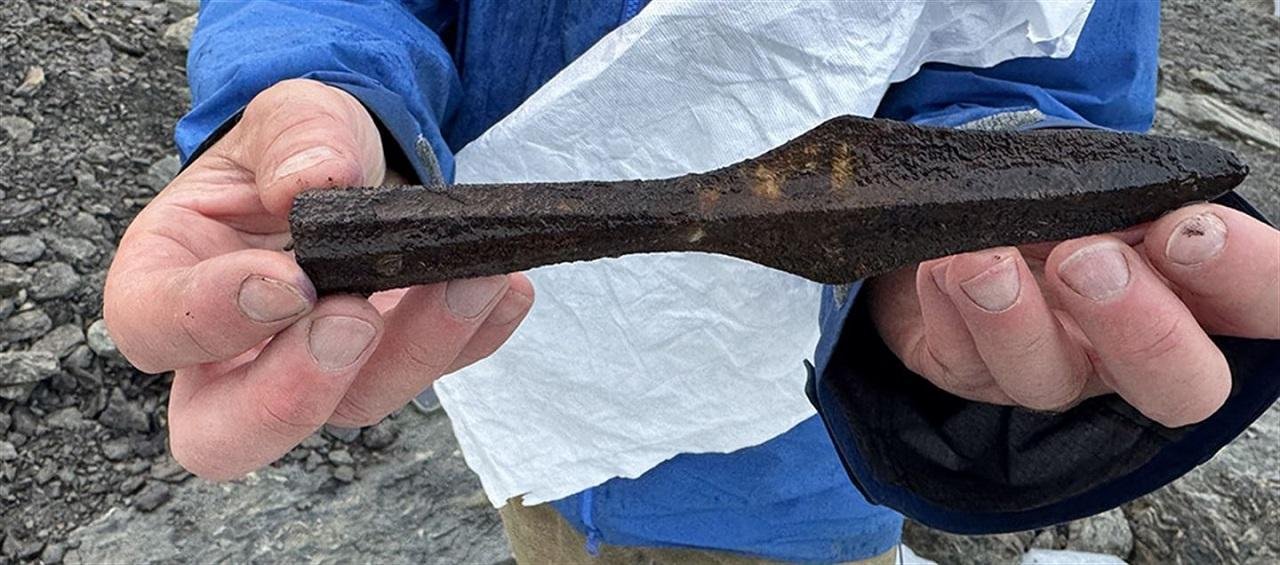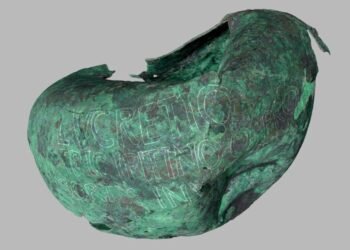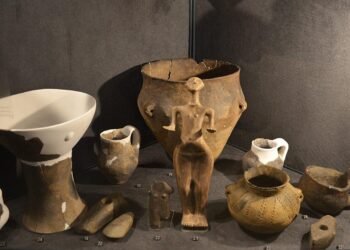A team of archaeologists working high on the Aurlandsfjellet mountain plateau in Vestland County, Norway, has made a fantastic discovery: a remarkably well-preserved 1,500-year-old reindeer trapping system revealed by retreating ice. The discovery, led by Vestland County Council and the University Museum of Bergen, is being hailed as one of Norway’s most significant archaeological finds of 2025.

The site consists of hundreds of meticulously carved wooden logs that once formed an elaborate mass-hunting installation, with the best-preserved part featuring two converging fences of wood leading to a large enclosure constructed with heavy timber where reindeer were herded and killed. This is the first large-scale wooden trapping structure to be found melting out of the ice in Norway, and possibly anywhere in Europe.
Nearby, archaeologists found a cache of hundreds of reindeer antlers, many with deep cut marks showing how the animals were processed after capture. The finding leaves little doubt that this was indeed a site for mass hunting. The installation probably dates to the mid-sixth century CE, when colder climatic conditions soon encased it in ice and preserved it for centuries.
The exceptional preservation extends beyond the hunting system itself. The team recovered numerous iron spearheads, fragments of bows and arrows, and finely carved wooden implements, the functions of which are still under study. Among the more intriguing discoveries were several paddles with delicate ornamentation—objects whose purpose remains mysterious and whose presence in a high mountain hunting site raises new questions about ritual or symbolic practices. A beautifully crafted dress pin made of antler, likely lost by a hunter, was also found among the artifacts.

The story of the discovery began when local hiker Helge Titland, who has documented ancient hunting sites in the area, happened upon carved pieces of wood emerging from the melting ice. His report prompted archaeologists to add the location to their list of ice patches to investigate. When the team returned with Titland the following year, even more of the structure had melted free, revealing the scale of the installation.
According to researchers, the remarkable preservation of the site was due to the fact that it became inactive precisely at the beginning of a colder climate phase. The constant snow accumulation sealed the structure under ice before decay could begin. For over a millennium, wood, antler, and metal were protected against destruction in this freezing and slightly humid environment. Only with modern climate warming have these remains reappeared on the surface.

All the recovered materials are now stored at the University Museum’s conservation department in Bergen, where specialists carefully stabilize the fragile pieces. The wood elements must dry slowly, while the iron objects undergo anti-corrosion treatment. The mountain area has been officially protected under Norway’s Cultural Heritage Act to prevent looting and damage.
As more ice melts, researchers warn that many ancient artifacts risk rapid deterioration or loss. They hope that this discovery, which provides a rare glimpse into Iron Age hunting technology and environmental change, will be part of a museum exhibition to preserve the story of the reindeer trappers of Aurlandsfjellet for future generations.
More information: Vestland County Municipality





















Disclaimer: This website is a science-focused magazine that welcomes both academic and non-academic audiences. Comments are written by users and may include personal opinions or unverified claims. They do not necessarily reflect the views of our editorial team or rely on scientific evidence.
Comment Policy: We kindly ask all commenters to engage respectfully. Comments that contain offensive, insulting, degrading, discriminatory, or racist content will be automatically removed.
Well no one would even know they were there had the heat not melted them out so it seems weird to worry about losing them for future generations when they would have ended up crushing under the ice anyway. When I think is interesting is that this seems to indicate that the world was warmer back then or at least that it’s been getting colder since then which is actually what temperature records would. For hundreds of millions of years the earth has been much warmer than it is now we’re actually in a cold spell
Was there global warming before 1500